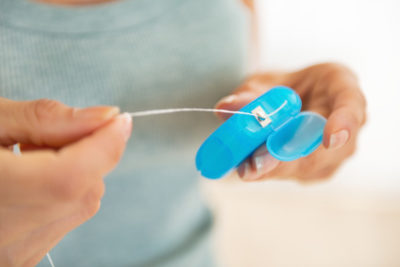 Brushing your teeth is not the only thing that keeps your teeth healthy. We all know that flossing is just as much important as brushing. Cleaning between your teeth with floss is highly recommended by the American Dental Association (ADA) because it’s the best way to keep cavities and gum diseases at bay. Also, it prevents your teeth from plaque.
Brushing your teeth is not the only thing that keeps your teeth healthy. We all know that flossing is just as much important as brushing. Cleaning between your teeth with floss is highly recommended by the American Dental Association (ADA) because it’s the best way to keep cavities and gum diseases at bay. Also, it prevents your teeth from plaque.
Plaque consists of bacteria that never miss a chance to feed on the leftover sugar and food particles in your mouth. When it feeds on the leftovers between your teeth, it secretes an acid that damages the surface of your teeth. This whole process leads to the formation of cavities.
If you allow plaque to grow in your mouth by not brushing and flossing your teeth, then soon it would begin to solidify into tartar. Tartar is a substance that you can see deposited along the base of your teeth or gum line. Although most people don’t take tartar very seriously, it’s perfectly capable of causing gum infections.
The best way to keep your teeth hygienic is to clean between them. And the easiest way to do that is flossing. This article will inform you how flossing must be done to protect your teeth from gum diseases.
What Should Be Used to Floss?
When you have a food particle stuck between your teeth you’re tempted to remove it by any means possible. You would be surprised what Americans sometimes use to get those particles out of their teeth. According to a research, Americans have used some of the most unusual things to clean between their teeth, including fingernails, strands of hair, folded paper, cutlery (spoon, knife, or fork), visiting cards, and safety pins.
It doesn’t take a genius to understand that using almost anything you can get your hands on to remove the food stuck in between your teeth can cause pain. Make sure you only use the tools that are medically approved and specially designed for this purpose. This would include toothpicks, tiny brushes, string floss, and water flossers.
Which Flossing Tool Should You Use?
The best way to pick the right flossing tool is to consult your dentist. After examining your teeth, your dentist would be able to advise you which tool you must use to floss your teeth with. Dental picks would help you get the particles stuck in the corners of your mouth that are difficult to reach. Water flossers would be good for you if bridges or braces in your mouth prevent you from flossing your teeth with string floss.
The Best Time to Floss My Teeth
There’s no ideal time for cleaning between your teeth. Just pick a time that suits you the best and be done with flossing your teeth. It can be after dinner before you go to bed (most people find this time the most convenient) or it can be early in the morning when you get up. Flossing between teeth is important even for kids. Make them do it as soon as they have two teeth that touch.
Try not to floss too hard or else you would end up injuring your gums or damaging the tissue between your teeth. You would feel some discomfort when you first start flossing your teeth, but once you make flossing your habit, the pain would wear out within a week or two. If the pain persists, then make an appointment with The Gentle Dentist at your earliest for a thorough dental checkup. We can be reached at 586-247-3500.
